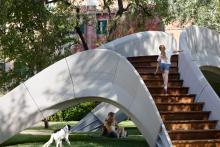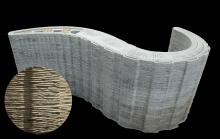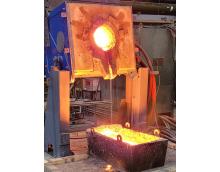
Backed by funding from the EU Commission, engineers behind the three-year DigiMat project hope to develop and demonstrate an eco-friendly cement mix, created from building waste, that can be easily printed into new, tight interlocking blocks for use in new buildings.
The university's research team says its objective is to decrease the CO2 footprint of printed products against traditional virgin concrete and cementitious mortars, through the development of printable mixtures that will use up to 100% recycled aggregates.
“Demonstration projects built over the past few years have shown both the viability and potentials of 3D printing technologies, however, these projects have used conventional raw materials in their concrete feedstock,” said project lead Dr Seyed Ghaffar, an associate professor in civil engineering at Brunel.
“The use of recycled waste driven secondary raw materials to replace virgin aggregates for 3D printing of a building block has not yet been done, but we hope to demonstrate it with this project.”
Construction, driven by its use of cement, is currently one of the world’s worst polluting industries, producing up to 0.85 tonnes of CO2 for every tonne of cement. DigiMat hopes to reduce the construction industry’s reliance on cement but offering a clean and affordable solution that reuses materials recycled from other buildings.
The team ultimately plans to demonstrate their technology by printing out a series of 50cm x 50cm recycled bricks which will be slotted together to form an interlocked wall in a similar fashion to one built from Lego.
“Nearly half of all materials extracted from Earth annually are used in concrete, and extraction of construction virgin aggregates is the main part of the global non-metallic mineral consumption,” said Ghaffar, who heads the additive manufacturing technology in construction (AMTC) research group.









